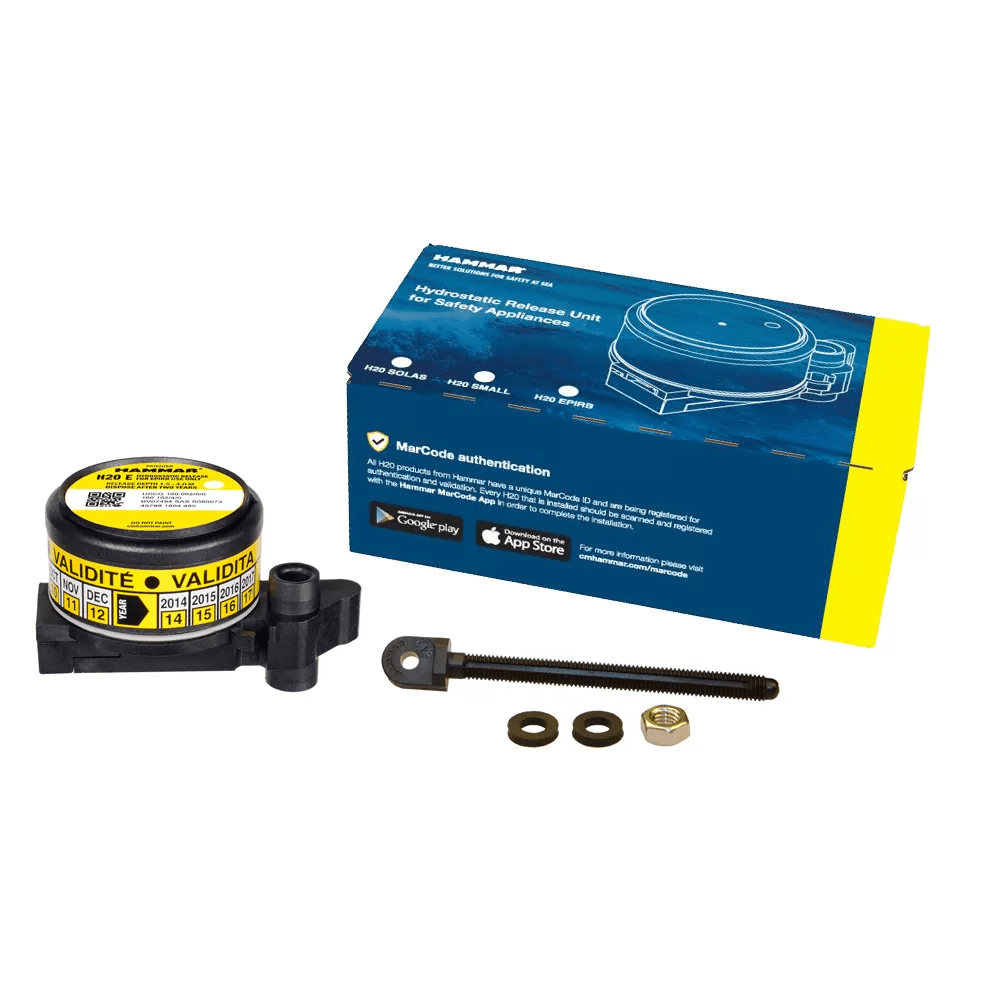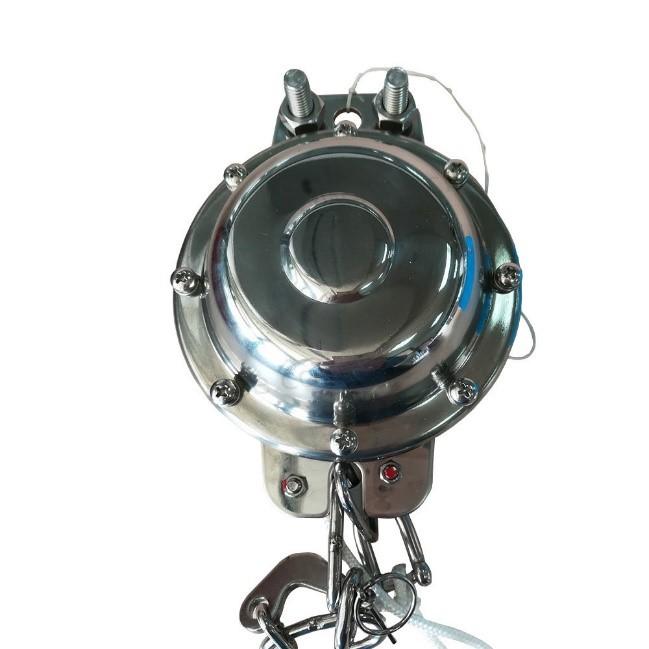Hydrostatic Release Units
The HRU is designed and approved to automatically deploy a life raft or float-free EPIRB in the event of a vessel sinking.
HRUs operate between 1.5 and 4 metres of water depth, to release the securing mechanism for the life raft or EPIRB.
AMSA inspectors often identify circumstances where HRUs are incorrectly fitted. Since 2021, AMSA has issued over 170 deficiencies in relation to deficient HRU arrangements on life rafts and float-free EPIRBs.

Life raft HRUs
The HRU that is used on life raft securing devices cuts through a cord that fastens the securing straps. The life raft container has enough inherent buoyancy to float free from its cradle and in doing so, pulls out the life raft painter to inflate the raft.
The painter is attached to a weak link that is designed to break once the raft has inflated.
It is important that the HRU and weak link are correctly installed. If the painter is not attached to the weak link correctly, the raft may not inflate, or may not release from the sinking vessel.
HRUs are designed to operate with specific equipment. The HRU for a life raft must be suitable for the size of the life raft secured. Multiple life rafts must not be secured by a single HRU unless approved by the manufacturer.

Over tensioning of the securing straps can lead to failure of the HRU to operate. Similar problems can occur when there is insufficient load on the HRU. Securing straps should be taut but not over tight.
Care must be taken to ensure the securing straps on a life raft canister will release when the HRU activates, and that the life raft painter is attached to the HRU weak-link.
EPIRB HRUs
The HRU that is used for a float-free EPIRB operates in the same way, but usually cuts through a rod releasing the EPIRB from the float-free bracket. Once the float-free bracket is opened, the EPIRB will float free and the water sensor will activate the EPIRB.
The HRU on a float-free EPIRB should be checked to ensure it is installed and that the expiry date is labelled correctly. No additional lashings should be used on the EPIRB housing – this can prevent the housing cover from releasing when the HRU activates, stopping the EPIRB from floating free.
When a HRU is installed, it must be marked correctly with the expiration date so you know exactly when it requires replacement.
Every HRU should have a series of stickers on it that indicate months and years. The installer must mark/peel off the month and year that the HRU is required to be replaced 2 years from date of installation - example below.
Date stickers peeled off/marked on a HRU by an installer show when the HRU is required to be replaced. This should be 2 years from date of installation.
Replacement and expiry
Float-free EPIRB HRUs and associated components must be replaced 2 years after installation, unless otherwise stated in the manufacturer's instructions. Failure to replace the HRU and release rod after 2 years may result in the EPIRB not deploying correctly in an emergency.
Each brand of float-free EPIRB has a specific EPIRB HRU model and replacement kit approved for installation. Refer to the manufacturer instructions.
A life raft HRU or reusable HRU are not approved to be installed in a float-free EPIRB. Once a float-free EPIRB has been activated, the release rod is cut in half in order to release the EPIRB to float free. It is important to ensure you replace the HRU and release rod after it has been used.


Life raft HRUs can be serviceable or disposable.
Re-useable HRUs must be serviced annually to ensure they will work when required. The HRU must be serviced by the manufacturer’s authorised service agent.
Disposable HRUs have a service life once installed and must be replaced once they reach their expiry date. The service life of the HRU is determined by the manufacturer. Most disposable HRUs have a service life of 2 years after they have been installed on the vessel. The date of installation or expiry is marked on the HRU.

Reminder
- Check that you have the right HRU for your safety equipment.
- Check that HRUs are correctly installed.
- Check that life raft painters are connected to the HRU weak link.
- Ensure HRUs are serviced or replaced by their due date .